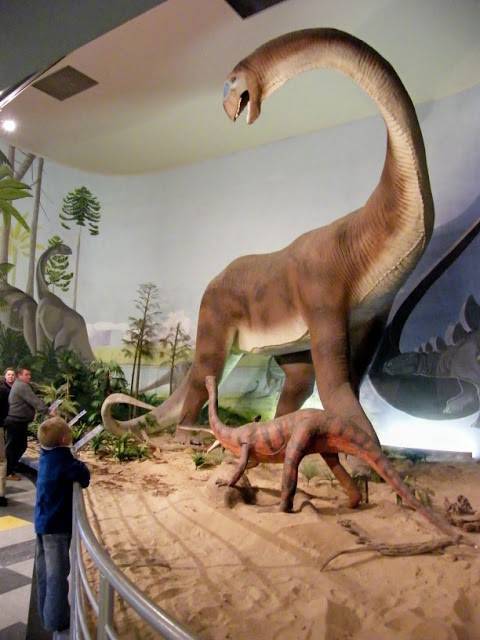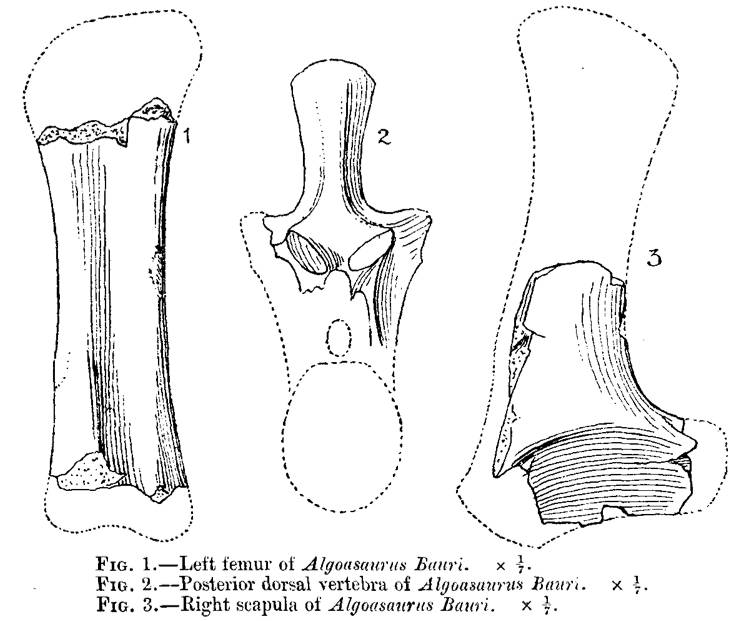Discover Nelson Mandela Bay’s indigenous dinosaur

The model Algoasaurus at Bayworld. Photo courtesy Jonker Fourie.
South Africa is rich in prehistoric treasures, including evidence of the earliest-known use of controlled fire, and thousands of fossilised remains of creatures ranging from early human ancestors to dinosaur eggs.
One such relic was discovered within the Nelson Mandela Bay area. The fossilised remains of a dinosaur were discovered in 1903, while the Port Elizabeth Brick and Tile Company was quarrying for brick-making materials near the town of Despatch.
Unfortunately the quarrymen were unaware of the significance of what they had found, and thought nothing of grinding up bones they assumed were from some uninteresting mammal, for use in brick-making.
By the time renowned palaeontologist Robert Broom examined the find, what remained were, according to Broom’s paper, “a number of very imperfect fragments of vertebrae, a fairly good femur, an imperfect scapula, portions of many ribs, and an ungual phalanx [claw].”
Following his examination of the remaining fossils in 1904, Broom felt he had enough information to publish his findings, naming the new species of dinosaur Algoasaurus bauri.
Today some of the bone fragments are on display in the Bayworld museum under the watchful eye of dinosaur exhibit curator Marvin Carstens.
The Algoasaurus was a member of the family of dinosaurs called sauropods, which, literally translated, means “lizard foot”, even though their feet were more like those of a modern-day elephant.
The sauropods were long-necked and long-legged herbivores, the most famous of which is the Brontosaurus. To put its size in perspective, consider that at between 10 and 20 metres long, the Algoasaurus was small compared to other sauropods.
If you can’t picture exactly how big that is, Bayworld has a meticulous recreation of how the Algoasaurus might have appeared.
Other prehistoric rarities on display include fossilised plant pieces and the fossilised remains of a small, ancient burrowing lizard-like creature called a Lystrosaurus. Within the dinosaur hall there are also life-sized models of other prehistoric creatures, and an exhibition detailing the evolution of life on Earth.
Even if you’re not crazy about dinosaurs, there is a lot more to experience at Bayworld museum. Among many exhibitions and activities on offer are the snake park (go on, face your fear), oceanarium, an exhibition on maritime history, an exhibition detailing the history and culture of the Xhosa people, and the curiosity corner, which is something like an old-fashioned museum.
Categories
Featured Posts
-
Unleash the Summer: Essential Travel Hacks for Saving, Safety and Smart Packing
As the temperature rises and the days grow longer, the allure of summer travel becomes…
-

Gqeberha: Tales of Adventure and Exploration
Although this adventure quote might sound cliche and a bit overused, it’s one thing that…
-

101 Things to do in and around Nelson Mandela Bay (Port Elizabeth/Gqeberha)
With an abundance of things to see and do in and around Gqeberha (Port Elizabeth), it is…
